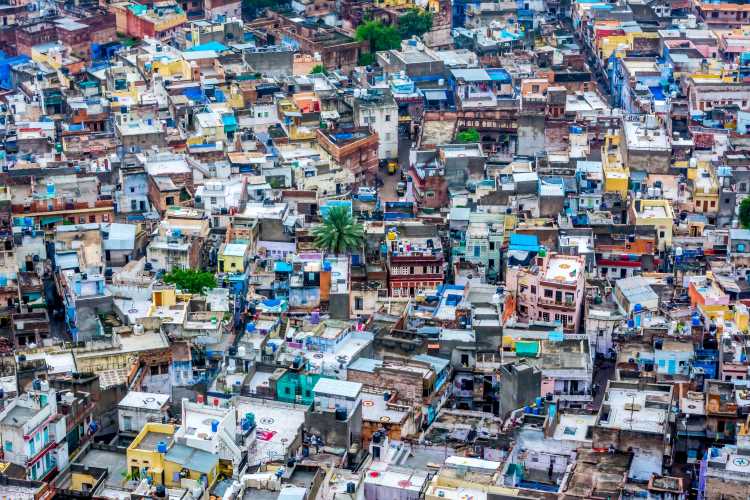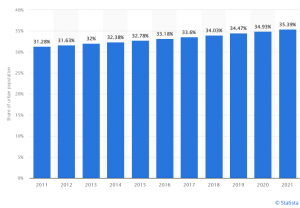
City planning and urbanisation: With more and more people from rural areas shifting to cities for better job opportunities and lifestyles, the government is focusing on city planning so that the urban areas can absorb the influx without running out of resources. India is currently witnessing rapid urbanisation, and city planning must be undertaken on a priority after proper research on its patterns and effects on the population.
City planning must ensure that there is equitable access to basic services such as education, clean water, sanitation, residences, and improved economic management which are woven seamlessly through digital service delivery platforms.
READ | Net-zero transition: Balancing energy security, sustainability
Indian cities will be home to 59 crore people in another seven years which means the window for ramping up these cities to match population growth is rapidly closing. Cities are GDP magnets, and despite the land mass of these cities taking up only 3% of the country’s total area, they generate 70% of its gross domestic product. It goes without saying that the better a city is planned, the better liveability it offers, and hence attracts more people. Thus, the country’s GDP per capita is directly linked to city planning.
Level of urbanisation in India (2011-21)

Following Maharashtra’s rule book
Maharashtrian cities were grappling with challenges and pressures relating to basic infrastructure, air pollution, deficient infrastructure, social inequities, large informal sectors (involving women and children), frequent mobility and migration, with increased vulnerabilities to disasters and climate change. However, the government has recognised that the same is emanating from poor city planning and hence has taken steps to improve the same.
To that effect, Maharashtra has conceptualised and initiated the Aspirational Cities Programme (ACP). This programme is modelled on the lines of the Aspirational Districts initiative of the NITI Aayog. The basic premise is that urban development must be integrated with all development sectors. The concept also calls for the adoption of scientific data methods for assessing and monitoring outcomes of both state and central schemes while also enhancing the voice and participation of citizens in civic affairs through physical and digital means.
Maharashtra has the largest share of urban population at 45.2%, and the state has surpassed the national average of 31.1%. The dismal fact remains that Maharashtra also reported the largest number of slums that are home to more than 1.18 crore people.
Reimagining urban development
Indian policy has, so far, been in denial of urbanisation which means that there has been no meaningful policy conversation on governance deficit and infrastructure shortfall. India is facing problems such as shortage of potable water, incessant flooding, traffic congestion, insufficient urban green and public spaces, and safety to marginalisation of urban poor, migrants, and vulnerable communities.
Cities are crucial to achieving India’s dreams of becoming a global economic powerhouse. The most challenging things that Indian cities are currently facing are lack of urban infrastructure and services. It also suffers from poor standards on local governance and environmental damage.
Revolutionary urban planning ideas
Currently, countries such as France and Australia are trying to model their cities on a revolutionary urban planning strategy called 15-minute cities. The idea behind this concept is to create neighbourhoods where everything a person needs for their daily life is within a 15-minute walk or bike ride from their home. This includes a mix of housing, workplaces, services, and amenities such as grocery stores, schools, healthcare facilities, and public transportation hubs. The idea behind this is that if everything is close to a person, they are encouraged to walk, bike, or take public transportation to reach their destinations, instead of taking cars. This not only decreases traffic congestion but also reduces carbon footprint.
A good urban planning policy is also expected to address the growth of informal settlements, slums, and unregulated construction, leading to issues such as overcrowding, inadequate infrastructure, and environmental degradation. The need is to manage this growth by providing a framework for planned development, including the provision of basic services.
India’s cities are also home to a large number of people living in poverty and facing socio-economic inequalities. By formulating policies around creating jobs, education, and healthcare, and ensuring basic services, India can also reap the benefits of its economic dividend. Another major goal of a good policy should be environmental sustainability as cities are largely responsible for greenhouse gas emissions. With India’s rapid urbanization, the country needs to adopt sustainable practices to minimize the impact on the environment. City planning must hence incorporate sustainable development by encouraging the use of renewable energy sources, promoting green infrastructure, and public transportation. The case in point is 15-minute cities which aim to promote sustainability.
